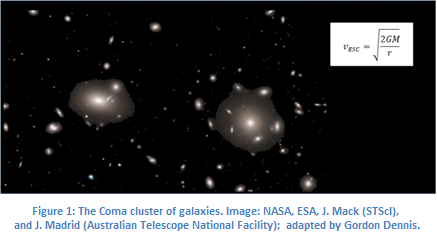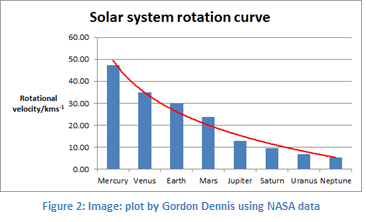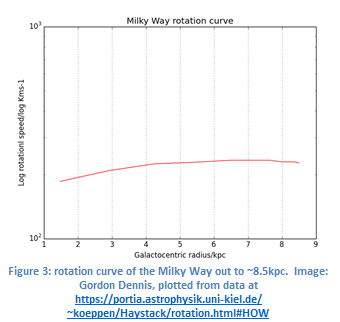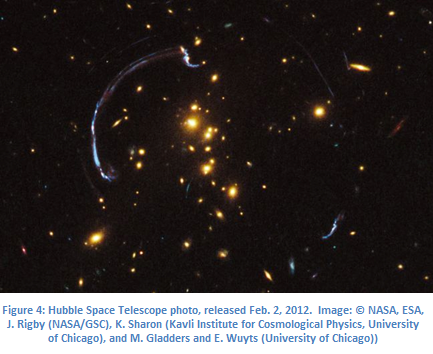|
A question often asked is “what is dark matter?” The answer touches all our understanding of physics - from the very large, at the scale of galaxy clusters; down to the very small, at the level of fundamental particles. Our best answer: we do not know. We know something of what dark matter does. But we don’t know what dark matter is. To be concise, I’ll call dark matter ‘DM’ from now on. “Normal matter” interacts with gravity, and particularly with electromagnetic radiation. In everyday terms, if we heat up normal matter, it will emit electromagnetic radiation. If it shines in the visible region, we can see it with our own eyes. This is exactly what we see when looking at the night sky. In complete contrast, DM does not appear to interact with electromagnetic radiation at all. We see only its gravitational effects. So, what kind of evidence do we have pointing to the existence of DM? Let’s look at just three of the many pieces of evidence for the existence of DM. Clue 1: Motion of galaxies in galaxy clusters The first person to postulate the existence of DM was Swiss astrophysicist Fritz Zwicky, in 1933. Zwicky spent most of his life at Princeton and his observations showed that the gravitational attraction between all the visible matter in the Coma galaxy cluster could not account for the observed velocities of the individual galaxies. The galaxies are moving so fast that they would exceed the escape velocity of the system (as shown in the inset equation) and would therefore fly apart. The cluster of galaxies would not exist, whereas we can see it plainly using telescopes. Zwicky concluded that there must be much more mass than could be seen visually. Since this missing mass is invisible, Zwicky called it “dunkle materie”- DM. And it was not just a little missing mass – it was a massive amount, many times the mass of the visible matter. At the time, many scientists were openly sceptical of this idea. Clue 2: Rotation Curves of spiral galaxies In the solar system with its eight planets orbiting the Sun, the innermost planet Mercury orbits faster than the second planet, Venus. In turn, Earth orbits slower, Mars slower still and so on. This is called Kepler’s second law, or Keplerian motion, after Johannes Kepler, and it was confirmed later by Sir Isaac Newton. Theory indicates that any system where the majority of the mass is at the centre – as with the solar system – will have a rotation curve like this: In 1975, Vera Rubin, an astronomer at the Carnegie Institution of Washington and her colleague Kent Ford announced the surprise discovery that most stars in spiral galaxies orbit at roughly the same speed, rather than showing Keplerian motion - these galaxies showed a so-called flat rotation curve. The implication of this is that galaxy mass is distributed approximately linearly with radius well beyond the location of most of the stars. The results suggest that at least 50% or more of the galaxies mass is contained in a DM halo around the galaxy extending to a radius of 100kpc or more. The diagram below shows the rotation curve of our own Galaxy, the Milky Way: From this data, at least out to 8.5kpc, where our Sun lies, the rotation curve is flat, rather than Keplerian; evidence for DM. Clue 3: Gravitational lensing Gravitational lensing – the bending of space time due to large masses, which causes light rays to appear to bend was predicted by Einstein’s General Relativity in 1917. The blue arcs in Figure 4 show the gravitationally lensed image of a galaxy 10 billion light-years away as it appears through the gravitational lens around the galaxy cluster RCS2 032727-132623 about 5 billion light-years away. However, the amount of lensing is too strong to be accounted for by the mass of normal matter in the foreground galaxy. The mass required is much larger: further evidence for DM.
So what is DM? Come back in a couple of weeks for a possible answer......
2 Comments
Leave a Reply. |
AuthorWMA members Archives
July 2024
Categories |
Proudly powered by Weebly





 RSS Feed
RSS Feed